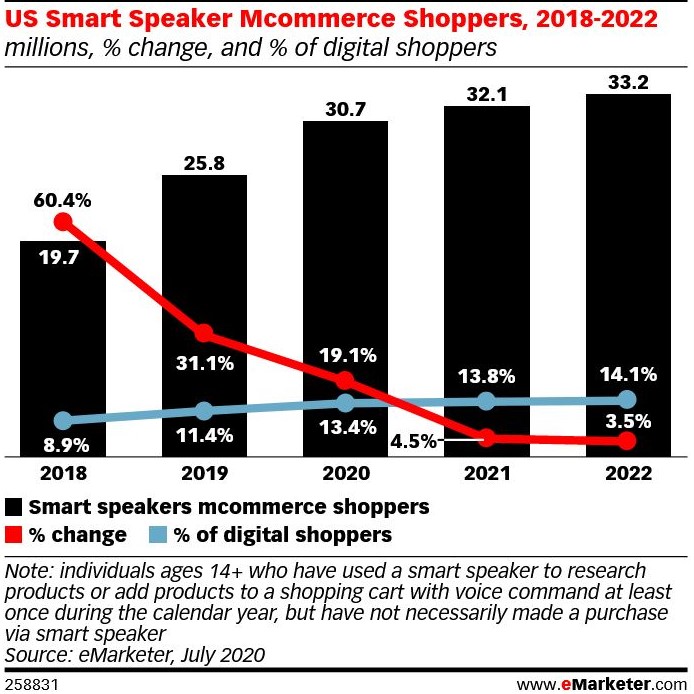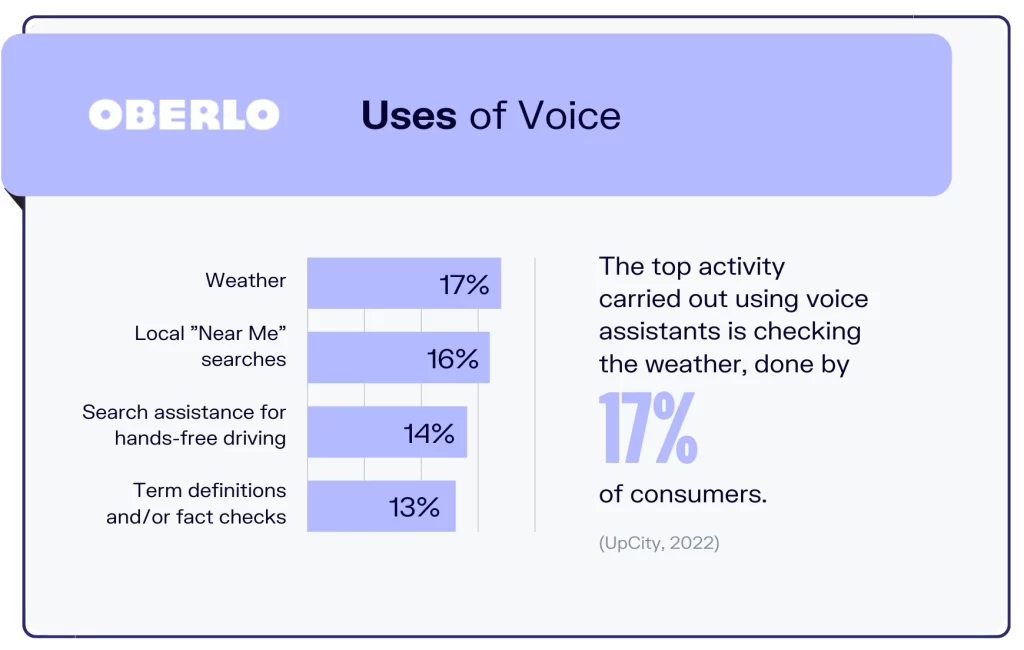Voice search has become one of the most important trends over the past few years. People use voice commands to search for information, make inquiries, and even shop for products. As a result, optimizing product content for voice search has become equally essential to remain present among search results in this growing habit.
In this continuation of our previous blog on voice assistants in ecommerce, we’ll go through some effective actions to optimize your product content for voice search, helping your business grow its reach and conversions.
The benefits of optimizing product content for voice search
There are a number of reasons to optimize product content for voice search, none of them affecting any other SEO strategy.
- More visibility
- A wider audience
- More conversions
- It’s cost-effective because long-tail keywords are cheaper.
Voice search is here to stay, and businesses that step ahead will have an undisputable competitive advantage in the short-term future.
A few interesting facts
- Noisy environments as the biggest challenge of using voice search.
- Assistants work in many languages, but not always get every accent. Still, this is only going to get better over time.
- Voice assistants can answer 93.7% of all search queries on average, but Alexa struggles to answer almost a quarter of all queries (SEMRush)
- 58% of voice search users search for local business queries (SEMRush)
- Over 50% of consumers expect to be able to make purchases through digital assistants in the next 5 years. (Microsoft and Bing)
- 58% of consumers use voice search to find a local business online. (Forbes)
Optimizing product content for voice search

Natural language and long-tail keywords
Unlike plain-text search, voice search is natural and conversational – indeed, Natural Language Processors have helped. Meaning users often ask in complete sentences when performing voice searches. And while product purchases through voice search are not as extended yet, this is an expected hit in the coming years.
Long-tail keywords make it easier for search engines to understand what users say and match their queries. This is simply because long-tail keywords reflect how people speak.
Make a deep keyword research to spot relevant long-tail keywords aligned with how users would actually inquire their assistant. So, for example, instead of targeting generic keywords like “water-resistant speaker” you could optimize your content for a long-tail keyword like “best portable water-resistant speaker“.
Just as important is understanding the natural language patterns when targeting cross-border markets. Many brands struggle to properly localize their product content and end up with either poor sales or little penetration.
Answer FAQ’s
Many voice search queries seek answers to specific questions, including questions about specific products. That’s a goldmine to prove expertise and/or provide educative content like short videos or product explainers. But to make the most of it all and get better SEO, creating a FAQ page in your website is a great way to bid for specific keywords, both short and long-tail.
This not only helps with voice search optimization but also provides valuable information to potential customers, increasing their confidence and trust, and your brand reputation.
If an FAQ page is too much for your website or listing page, you can still fit them into your product descriptions and other relevant sections. Anticipating and answering frequent questions about your product or industry is a very effective way to optimize product content for voice search. Informative pieces don’t need to be extensive, just clear and concise answers to common questions.
Mind your snippets
Snippets are short and direct answers that appear at the top of search engine results. If you don’t know, snippets tell them what a page, image, or video is about.
They are often referred to as the metatitle, metadescription and ALT text, and are often the response provided by voice assistants.

Give your content the right tags, structure, and categories so it provides clear and concise information and answers common questions.
A few posts ago I talked about the power of visuals and the attention span. To make your content scannable and digestible – the top priority, it has to be structured in a specific way. Three seconds is all viewers will give.
Use structured headings and bullet points, and don’t forget to add ALT text to your images. Highlight key information and provide comprehensive yet concise answers. It may take some time like copywriting usually does, but your wording says a lot about your brand.
Optimize Local Search

Most voice search queries have a clear local intent, like “Where can I buy a portable speaker near me?”. Optimizing product content for local voice search is a matter of survival for physical retailers in this hybrid commerce context where omnichannel is mandatory.
Use local keywords in your product content (including your city name), and include all your business information on Google My Business (address, phone number, and opening hours) and any other online platforms. This will help search engines understand the relevance of your business for local voice search queries and improve your positioning in local search results.
Mobile first!

As obvious as this may seem, voice searches are primarily made from mobile devices. Therefore, it’s crucial to optimize your product content for mobile users. That is making sure your website is mobile-optimized, loads quickly, and provides an engaging user experience across different devices and screen sizes.
Consider also setting up the right implementing structured data markup to enhance how search engines understand your content and are likely to improve your performance. Structured data provides coded additional information about products, like their price, availability, and ratings, making it easier for voice assistants to present accurate and compelling information to users.
Conclusion
Voice search is transforming how people search for and interact with products. The number of users relying on voice-controlled devices and assistants is growing every day, both for information and shopping.
By using natural language, long-tail keywords, and answering the most frequently asked questions about your industry, you can effectively optimize your product content for voice search and increase considerably the chances of being found.
However, languages are living and dynamic, meaning that people change the way in which they use them. That calls for regular monitoring to maintain and improve your website’s performance.
Needless to say, to optimize product content for voice search, one needs product content to actually drive sales. For example, self-explaining product photography, relatable images, and bite-size short videos to show products in action.
And at Content2Sell that’s exactly what we do!



